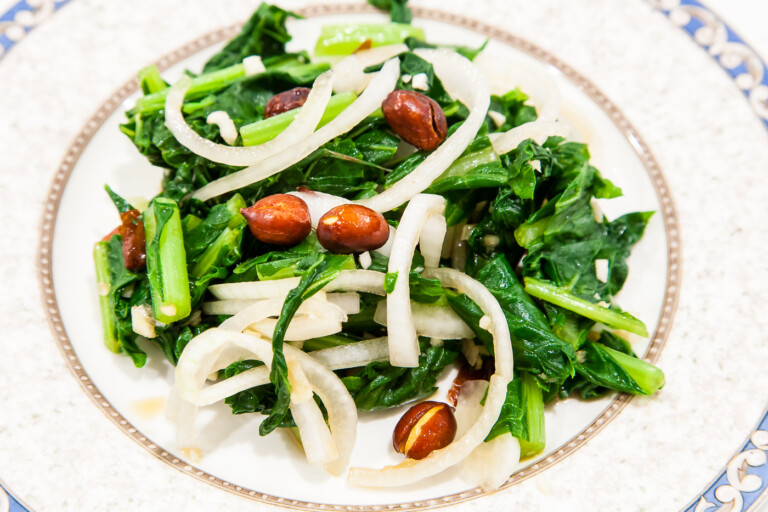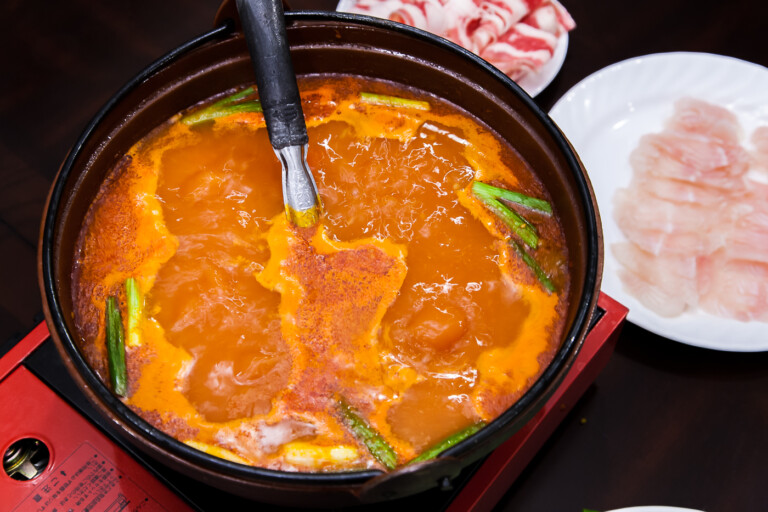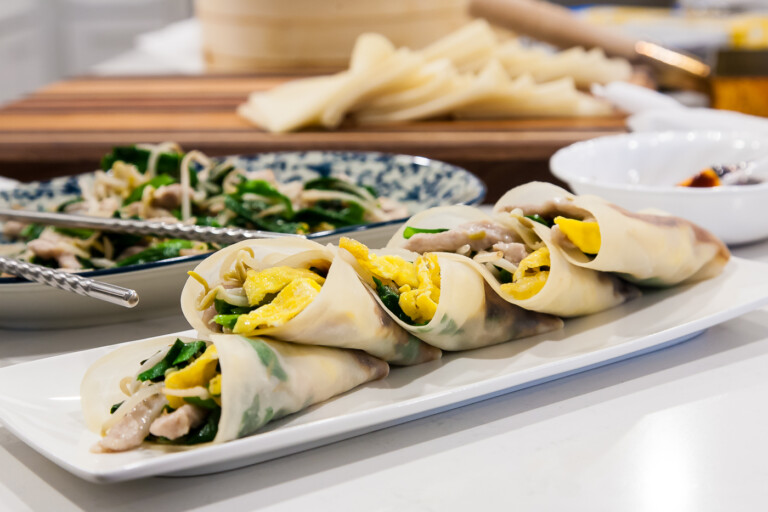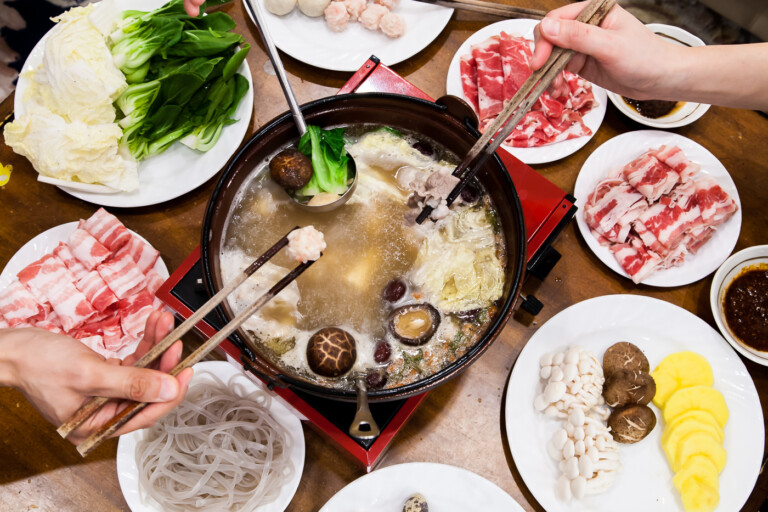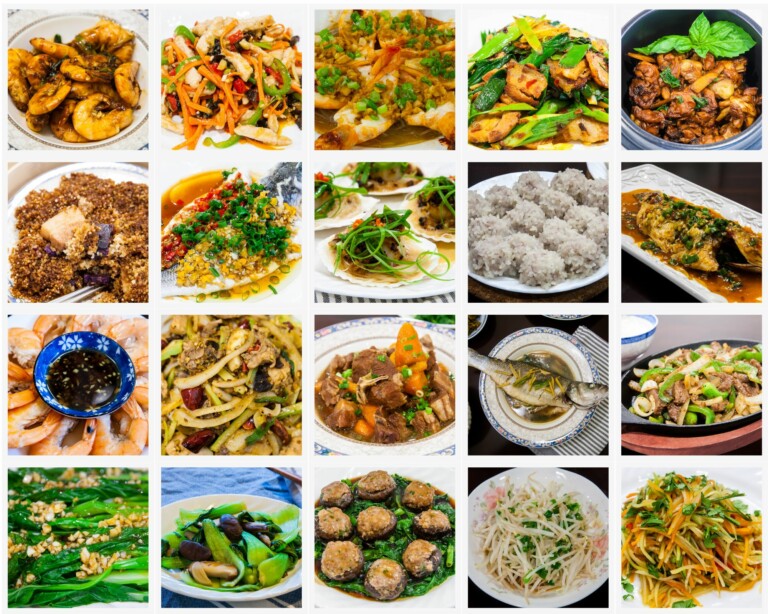
Tang Yuan (Glutinous Rice Balls)
February 18, 2023 Print
To delight my kids, I made these cute rabbit-shaped tang yuan (汤圆) (also known as glutinous rice balls or sweet rice balls) to celebrate this year’s Chinese Lantern Festival (元宵节) on February 5th. Tang yuan is a type of Chinese dessert typically made with glutinous rice flour, shaped into round balls, and filled with sweet or savory fillings. My kids especially like the sweet sesame filling. This is also the year of rabbit. So I added a few ears to make the tang yuan/sweet rice balls look like cute little rabbits.
For Chinese people, tang yuan (汤圆) or yuan xiao (元宵) is traditionally eaten on the day of the Lantern Festival. In fact, the Spring Festival is not really over until the celebration of the Chinese Lantern Festival, which always falls on January 15th of the lunar calendar. This year, that was on February 5th. It is also the day of the first full moon after the Chinese New Year. As a kid, I remember going to Lantern Festival temple fairs (庙会) to look at lantern shows, play riddle games, watch a traditional lion dance or stilts dance during the day, and eat tang yuan or yuan xiao as dessert at night.
So why do Chinese people eat yuan xiao (汤圆) or tang yuan (元宵) on the day of Lantern Festival? These round shaped desserts not only taste great with their sweet filling and soft chewy texture, but they also symbolize familial harmony and cohesion. As a result, family members tend to enjoy tang yuan together on the day of the Chinese Lantern Festival.
Many people use tang yuan (汤圆) and yuan xiao (元宵) interchangeably. They are quite similar in nature in terms of ingredients and taste, but they also have some key differences.
- The fundamental difference is the way tang yuan (汤圆) and yuan xiao (元宵) are made. Tang yuan is made by wrapping soft filling in a dough made with glutinous rice flour, whereas yuan xiao is made by rolling the filling in glutinous rice flour until a desirable sized ball is achieved.
- Due to the ways they are made, yuan xiao (元宵) breaks easily after being stored for a few days, whereas tang yuan (汤圆) can be stored for a long time in a freezer without losing its shape and taste. As a result, tang yuan is way more popular than yuan xiao in China nowadays since people can just buy it from the grocery store, store it in a refrigerator, and eat it whenever.
- Tang yuan (汤圆) is softer and its filling is more liquid-like than yuan xiao’s (元宵). Tang yuan (汤圆) is made with both sweet and savory filling whereas yuan xiao (元宵) is made with only sweet filling.
- Yuan xiao (元宵) came from Northern China, whereas tang yuan (汤圆) used to be only from Southern China only. Today, tang yuan is enjoyed throughout China.
On a side note, these glutinous desserts are quite tasty. But they are also loaded with sugar and carbs. That’s why I usually only make 12 at a time and give them sparingly to my kids. To me it’s the symbolism that counts more than the quantity. You can freeze the uncooked ones in a freezer. They should be good for at least 6 months.
Gluten Free, Vegetarian
Preparation Time: 1 hr 30 mins
Total Time: 1 hr 35 mins
Servings: makes ~12 tang yuan
Ingredients:
Glutinous rice dough
- ~1 1/3 cup (~130g) glutinous rice flour + extra loose glutinous rice flour 1
- 1 tablespoon powdered sugar
- 1 tablespoon corn starch or tapioca starch
- ~2/3 cup (~150 ml) very hot water
- 1 teaspoon coconut oil 2
- red food coloring or red fruit juice (only if you make them into rabbits)
Sesame filling 3
- ~2/3 cup (~75g) toasted black sesame seeds
- 3 tablespoons unsalted butter (room temperature) or coconut oil or lard
- 3 tablespoons powdered sugar
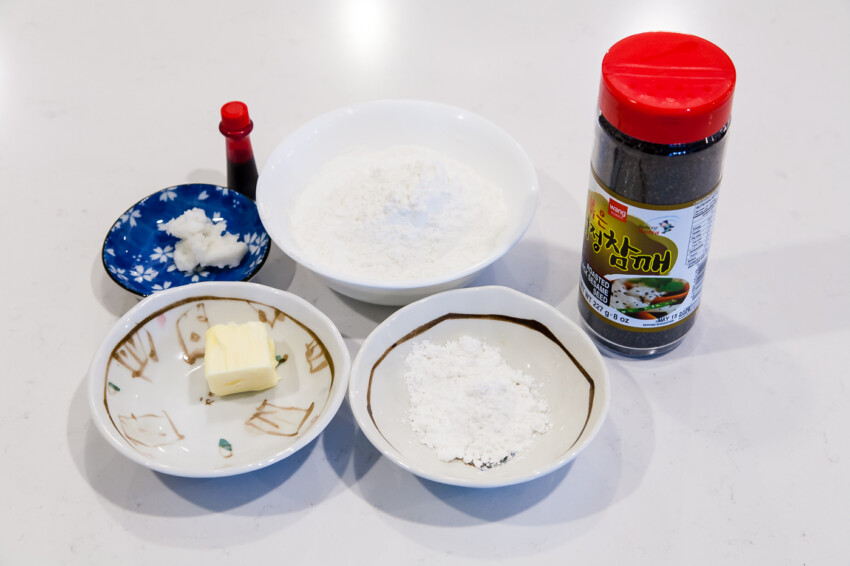
Preparation:
- Use a small blender to blend the sesame seeds into a powder. Sesame seeds contain much oil. So it can get quite lumpy as you blend. Use a utensil to get all the sesame powder from the blender into a mixing bowl. Add 3 tablespoons of unsalted butter and 3 tablespoons powdered sugar to the mixing bowl. Combine everything with a fork until well mixed.




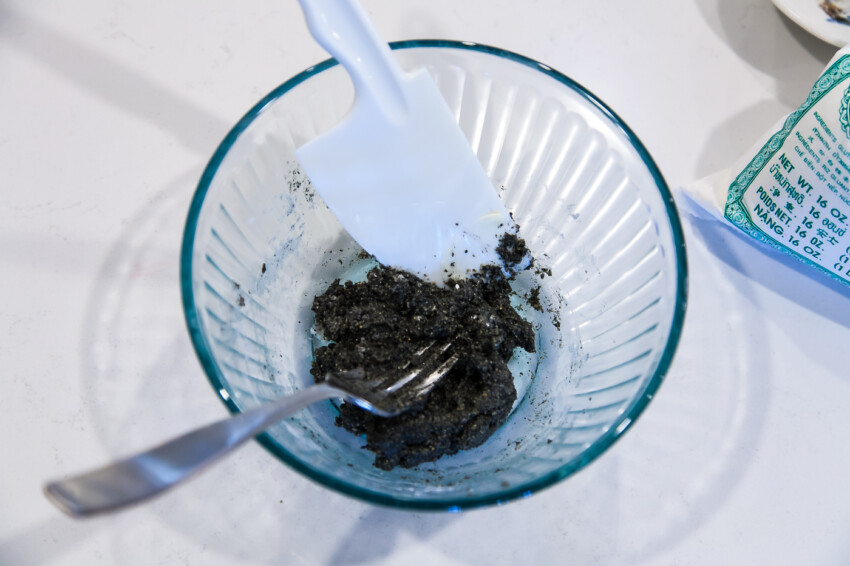

- Line a plate or baking sheet with a piece of parchment paper. Scoop out a round-shaped ball of sesame mix using a 1 teaspoon measurement spoon and put it onto the parchment paper. Each ball should be no more than 10g each. Use a food scale for exact measurements if desired. Use a spoon to shape the filling so that it’s round. Once all the sesame mix is used up, put the entire plate or baking sheet in a freezer or refrigerator for at least 30 minutes. This step hardens the sesame mix and makes wrapping it much more manageable.



- While waiting for the sesame mix to harden, prepare the dough. In a large mixing bowl, combine 1 1/3 cup of glutinous rice flour with 1 tablespoon of powdered sugar and 1 tablespoon of corn starch. Slowly pour 2/3 cup of very hot water into the glutinous rice flour mix. Do not pour the hot water all at once. Add it slowly while using a pair of chopsticks or fork to mix the ingredients. When the dough is getting clumpy and is cool enough to touch, use one hand to gently knead the dough until the dough is soft and elastic when stretched.4 If the dough is too hard or lumpy, add a tiny bit of hot water and keep kneading. If the dough is sticky to the touch, add 1 tablespoon of glutinous rice flour at a time and knead. When the dough is no longer sticky (it should not leave residue when touched), add 1 teaspoon of coconut oil and knead several times until the coconut oil is well blended. To test if the dough is ready, stretch the dough out and fold it in half. Then stretch it out again and fold again, as depicted. If the dough is elastic and does not stick to your hands during the two stretch and folds, it should be ready.


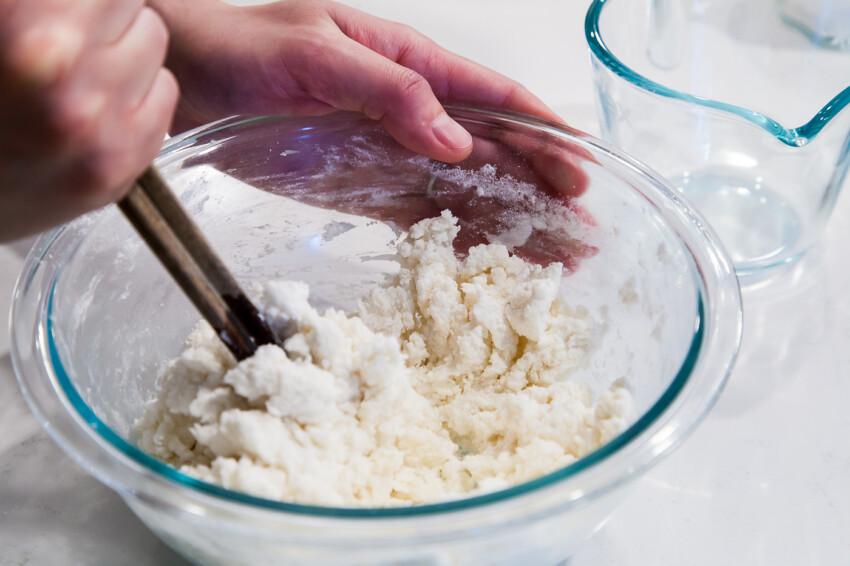










- On a flat surface, use both hands to roll the dough into a long noodle-shaped cylinder. Then cut the dough into twelve equal-sized 20g pieces. The leftover dough is for the rabbit ears. Sprinkle a plate with some loose glutinous flour. Put one of the 12 dough pieces in between both your palms and roll it to a ball. Repeat until all 12 pieces are rolled into balls. Put all 12 pieces on the prepared plate and cover with plastic wrap.





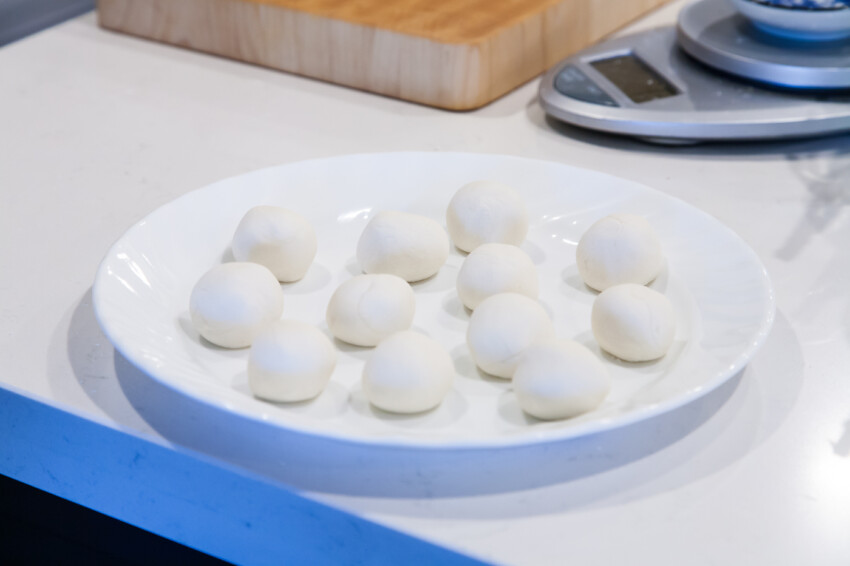

- Wrapping Tang Yuan: Take the sesame filling from freezer or refrigerator. Use a thumb to gently press a dough ball until it becomes a flat circle. Put 1 sesame ball onto the dough circle. Gently cover the filling by folding the dough together like a half moon shape. Make sure the filling is completely sealed by the dough. See pictures. Gently roll into a ball with both your palms to finalize the tang yuan ball shape. Put the finished tang yuan back under the same plastic wrap to prevent it from drying out. Repeat to make the rest of the tang yuan. Proceed to step 7 and 8 if you don’t plan to make the tang yuan into little rabbits.





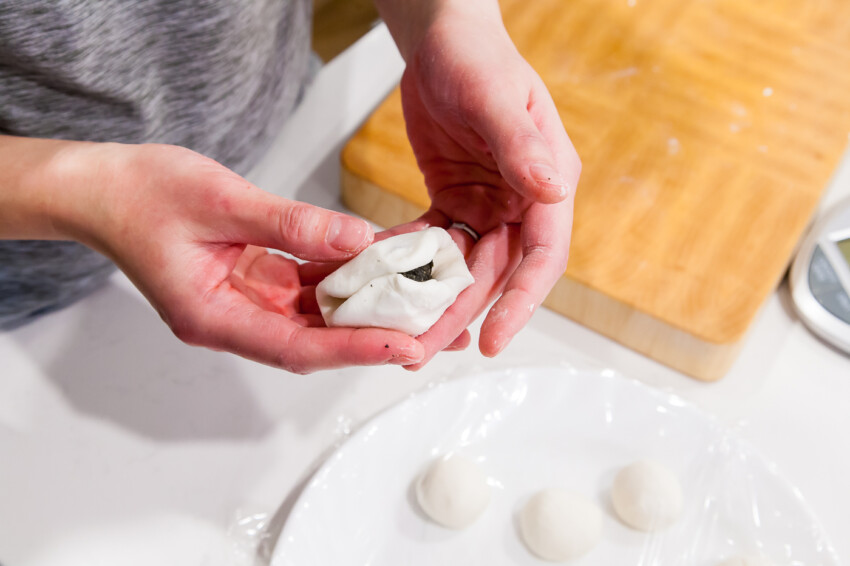



- Rabbit ears: Separate the extra dough in to two pieces, one large and one small. Add a tiny bit of red food coloring (or red fruit juice) to the small piece and mix the color into the dough. You might need to add some glutinous rice flour if the dough become sticky again. The dough is ready when it becomes a deep pink, as depicted. Take a small piece of the white dough and separate it into two equal halves. Roll both pieces into round balls. Press each round ball into a flat oval shape. Then take a tiny piece of red dough and separate it into two equal halves. Make each red piece into a stick and put it onto the white oval piece. Slightly wrap the white oval piece over the red piece. See pictures The ears should be ready and look like the ones depicted.





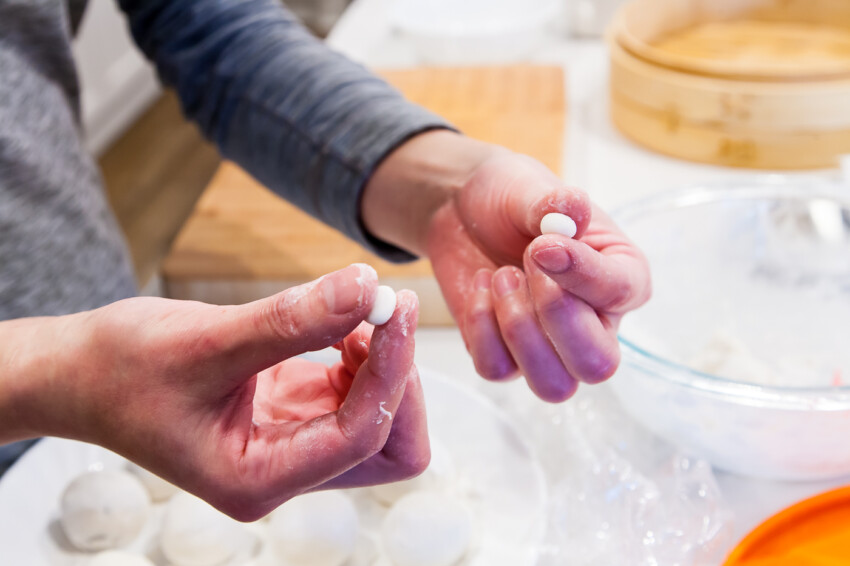



- Making the Rabbit: Prepare a small cup with some water. Press two sesame seeds onto the tang yuan to serve as the eyes of the rabbit. Dip the bottom of the ears in the water and press them onto the top of tang yuan to be the ears of the rabbit. The water will help the ears stick to the tang yuang. Put the finished tang yuan back in the same plastic wrap to prevent it from drying out.



- Boiling Method: Heat a sauce pan filled half way with water under medium-high heat. When water starts boiling, gently transfer the tang yuan one by one into the boiling water, using a spatula to slowly swirl the water to prevent the tang yuan from sticking to the bottom. Once the tang yuan floats to the top of the water (about two to three minutes), transfer 2 to 4 tang yuan along with some liquid into a small bowl. Wait another 2 minutes before enjoying.


- Steaming Method: Heat a steamer base filled with water under medium-high heat. Line each individual tang yuan with a piece of parchment paper. Transfer the tang yuan to the steamer rack/bamboo steamer. Then when the water starts boiling, put the steamer rack/bamboo steamer on top of the base and steam for 2 to 2.5 minutes on medium-high heat. Do not steam for more than 3 minutes. (Do not over steam otherwise the rabbits will become flat). Enjoy!


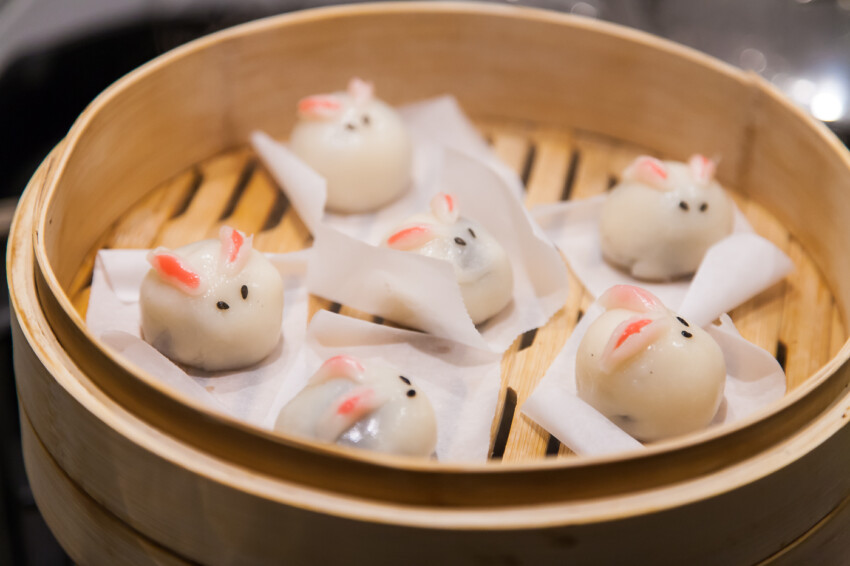
Bon Appétit

Notes:
- You can find glutinous rice flour in any Asian grocery store and some western grocery stores. If you are not making the rabbit ears, you only need about 1 cup of glutinous rice flour.

- You can use room temperature unsalted butter or lard if you don’t have coconut oil.
- There are so many different types of filling you can put in tang yuan. Red bean paste and peanut butter are some of the common fillings. You can make your own or buy from stores.
- It might take a bit trial and error to get the right consistency and elasticity. There is no yeast involved, so you don’t need to worry about precise measurements. In my experience, if the dough is hard and breaks easily, add a little bit of hot water and keep kneading until the dough becomes soft and elastic. If the dough has a sticky feeling, add a tiny bit of glutinous rice flour and continue kneading.







